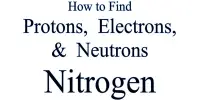Atoms and particles are regulated by the laws of quantum mechanics, where different possible situations can coexist together. Have you ever been to more than one place at the same time? If you are much larger than an atom, the answer is no.
Quantum systems are governed by what is called a “wave function”: a mathematical object that describes the possibilities in these various possible situations. And these different possibilities can coexist in the wave activity known as the “superposition” of different states. For example, a particle that is in multiple different places at once is called “spatial superposition”.
In general, quantum mechanics applies to the tiny world of atoms and particles. The jury is still out on what it means for large-scale things. It is only when any measurement is made that the wave function “collapses” and the system ends in a certain state.
In our study published in Optical today, we have proposed an experiment that can solve this thorny question together. In general, quantum mechanics applies to the tiny world of atoms and particles. The jury is still out on what it means for large-scale things.
Erwin Schrödinger’s cat: In the 1930s, the Austrian physicist Erwin Schrödinger experimented with his famous idea of a cat in a box that could live and die at the same time, according to quantum mechanics. In other words, the cat is present as a wave function with multiple possibilities before it is observed. When it is observed it becomes a certain object. In it, a cat is kept in a sealed box so that it has a 50-50 chance of being killed in a random quantum event. The cat is both dead and alive at the same time until the box is opened and the cat is observed.
It basically states that quantum mechanics can only apply to atoms and molecules but cannot describe larger objects. After much debate, the scientific community at the time agreed with the “Copenhagen interpretation.”
It turned out they were wrong. In the last two decades or so, physicists have created quantum states on objects made up of billions of atoms – large enough that they can be seen with the naked eye. However, it has not yet included spatial superposition.
How does a wave function become real?: This is what physicists call the “problem of quantum measurement.” It has amazed scientists and philosophers for almost a century. But how do wave functions become “real” objects?
If this kind of heat is found, it means that a large quantum superposition is impossible. If such heat is denied, then perhaps nature will not feel “quantum being” in any form.
If there is a system that removes the possibility of quantum superposition from large-sized objects, it must somehow “disrupt” the wave function – and it will generate heat.
Physicists do not know what the process is to prevent large-scale quantum superpositions. According to some, it is an unknown cosmic field. Again some suspect that gravity may have something to do with it.
If the latter happens, with the help of advanced technology we can place large objects, even sensitive creatures, in the quantum state. This year’s Nobel Prize winner in physics, Roger Penrose, thinks it could be the result of living beings’ consciousness.
The movement of the minuscule is chasing: For the past decade or so, physicists have been intensely searching for heat which indicates a disturbance in wave activity. To find this out, we need a method that can suppress all other sources of “excess” heat (measured as accurate) that can lead to accurate measurement.
In our study, we created this kind of experiment, which could reveal whether spatial superposition is possible for large-sized objects. So far the best tests have not been able to achieve this. We should have an effect called quantum “reaction”, so that the work of observation creates heat.
Is it all Quanta?: Our proposed test is challenging. You can’t kind of set up on a Sunday afternoon. It could take years of development, millions of dollars, and a whole bunch of skilled experimental physicists. To put a human or a cat in quantum superposition – there is no way we know how it will affect us.
Fortunately, this is a question we don’t have to think about right now. Stephen Forstner, Fellow of Postdoctoral Research, University of Queensland This article has been republished from the conversation under the Creative Commons license. Read the original article.
Yet, this may answer the most interesting question about our reality: Is everything quantum? And so, we definitely think it’s worth a try.















